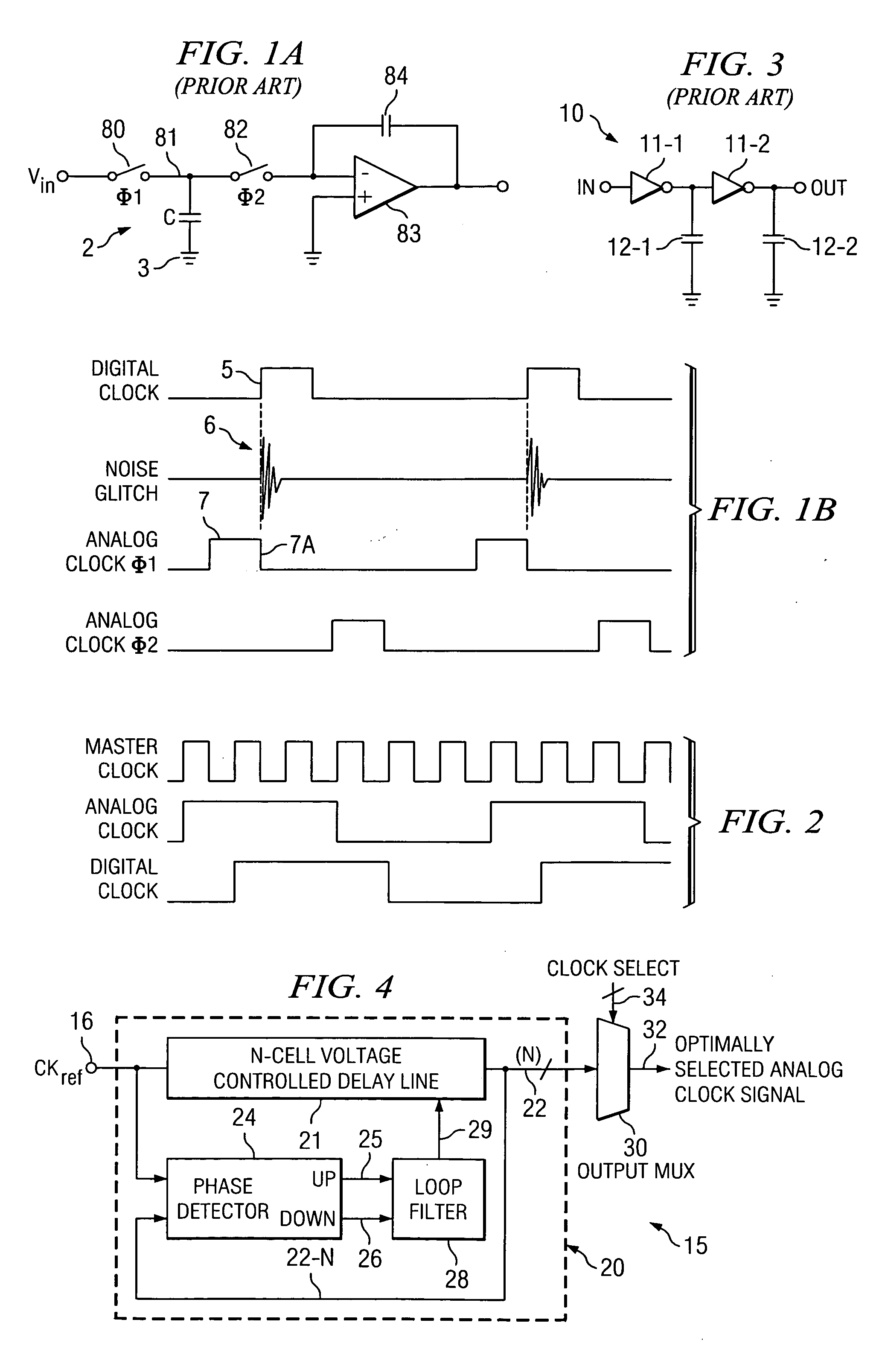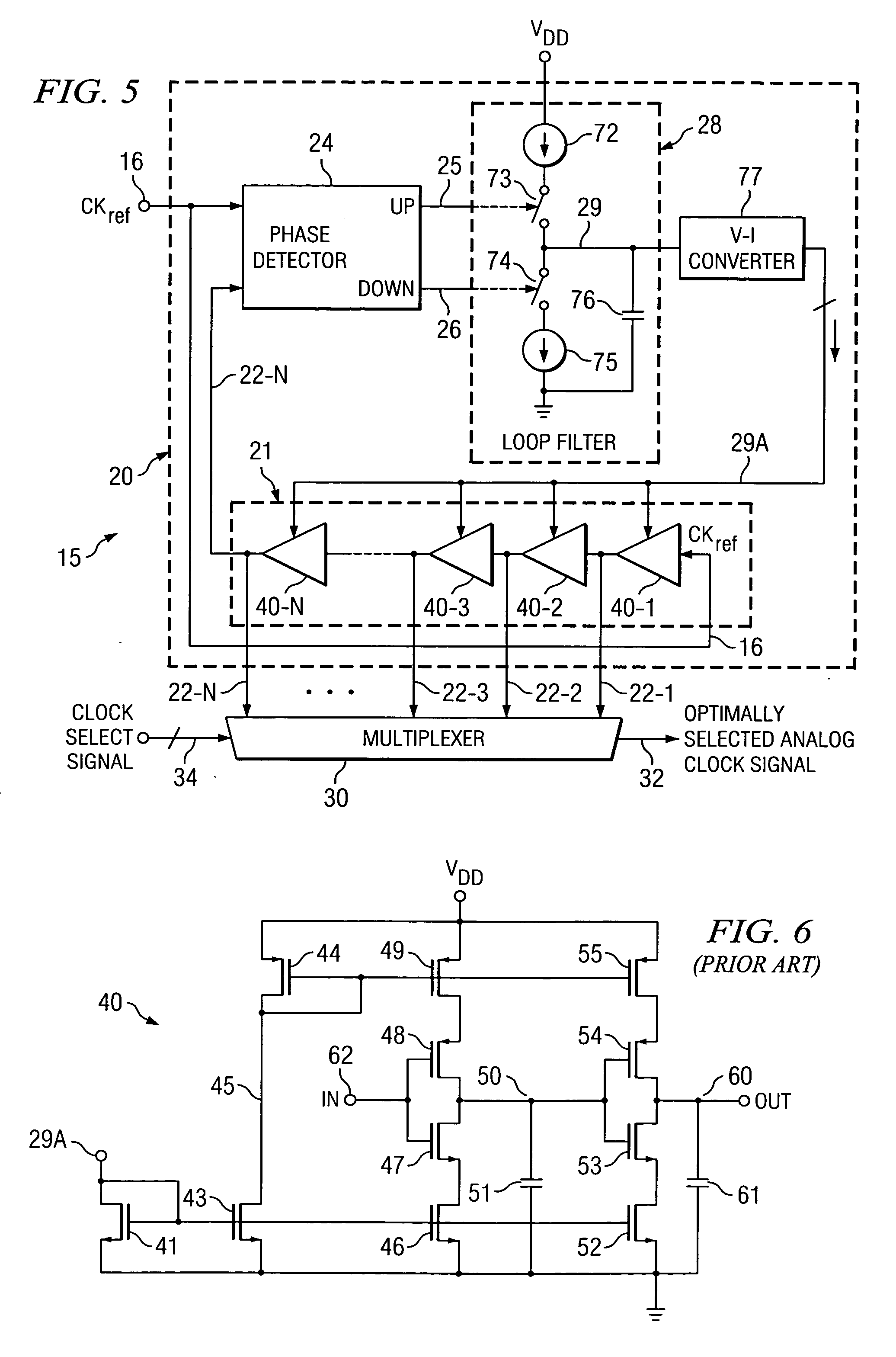Delay locked loop circuitry and method for optimizing delay timing in mixed signal systems
- Summary
- Abstract
- Description
- Claims
- Application Information
AI Technical Summary
Benefits of technology
Problems solved by technology
Method used
Image
Examples
Embodiment Construction
[0034] The described embodiment of the invention provides a practical way of selecting an optimum amount of the delay between an analog clock signal and a digital clock signal so as to reduce or minimize degradation of analog signals in a mixed signal systems due to noise caused by digital signals therein, wherein the delay is insensitive to temperature variations and process variations.
[0035] Referring to FIG. 4, an analog clock generation circuit 15 of the present invention includes a conventional delay locked loop (DLL) circuit 20 and an output multiplexer circuit 30. DLL circuit 20 includes a voltage controlled delay line 21 having N delay cells, a phase detector 24, and a loop filter 28. An input clock signal CKref is applied by conductor 16 to an input of the first delay cell 40-1 of controlled delay line 21 and also to a first input of phase detector 24. The outputs of the various N delay cells of controlled delay line 21 are connected to various inputs, respectively, of an ...
PUM
 Login to View More
Login to View More Abstract
Description
Claims
Application Information
 Login to View More
Login to View More - R&D
- Intellectual Property
- Life Sciences
- Materials
- Tech Scout
- Unparalleled Data Quality
- Higher Quality Content
- 60% Fewer Hallucinations
Browse by: Latest US Patents, China's latest patents, Technical Efficacy Thesaurus, Application Domain, Technology Topic, Popular Technical Reports.
© 2025 PatSnap. All rights reserved.Legal|Privacy policy|Modern Slavery Act Transparency Statement|Sitemap|About US| Contact US: help@patsnap.com



